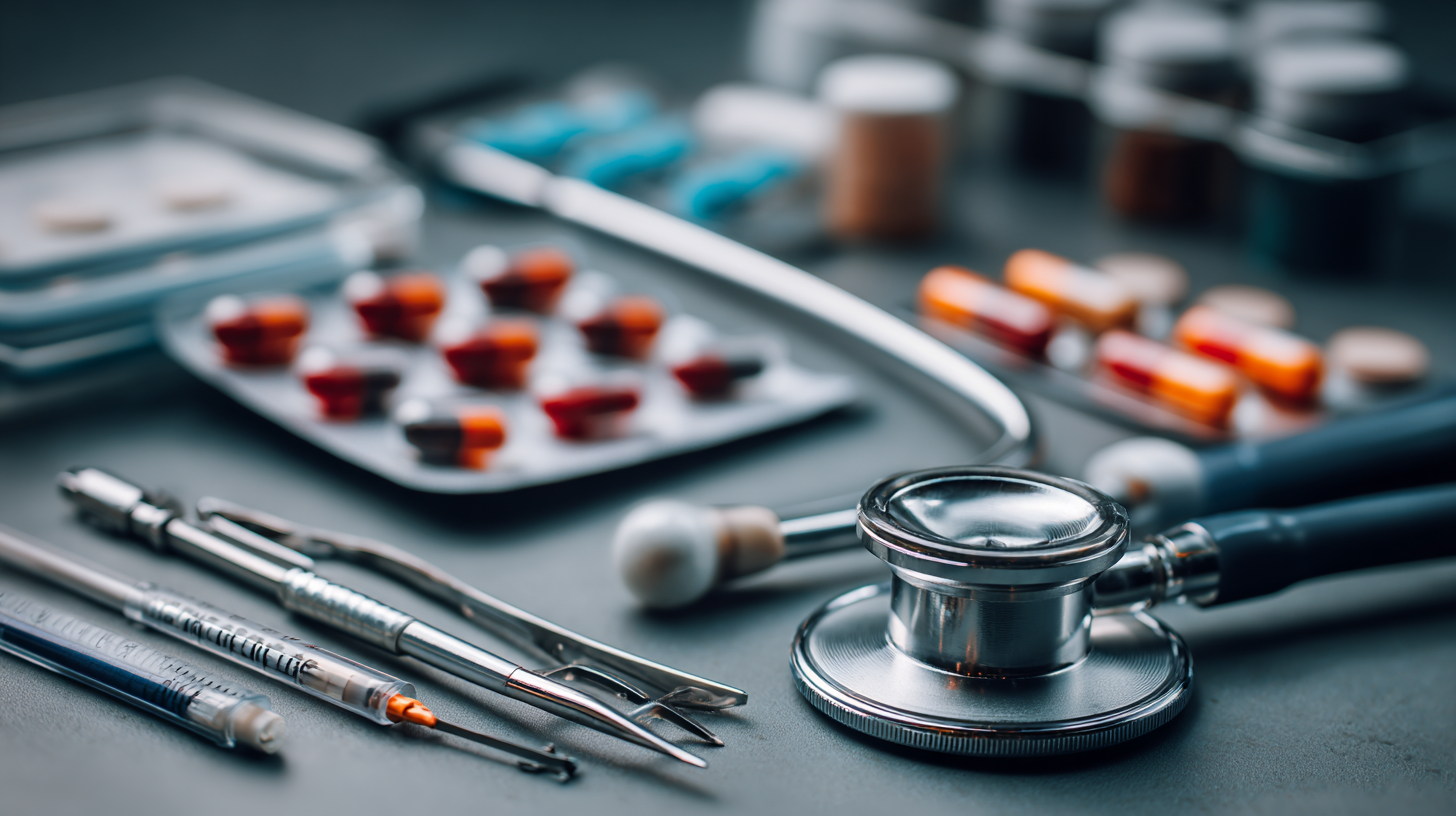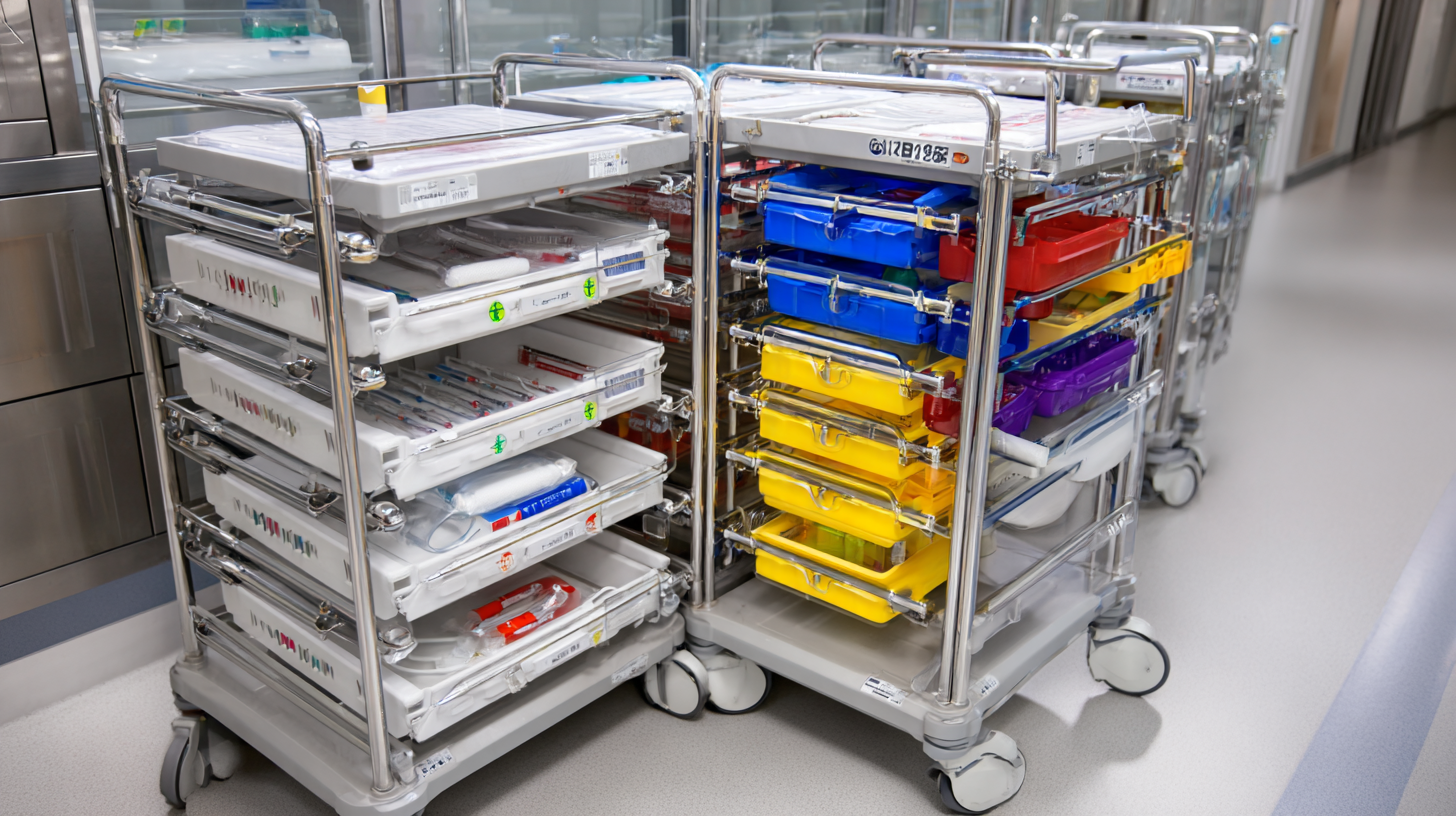Click here to browse our On The Mend Portfolio!
Discovering Premium Medical Accessories From China's Leading Manufacturing Factory
As the global demand for healthcare products continues to rise, the importance of high-quality medical accessories has never been more pronounced. According to a recent report by Grand View Research, the global medical accessories market is projected to reach USD 40.9 billion by 2025, growing at a compound annual growth rate (CAGR) of 7.4%. This surge is driven by advancements in medical technology and an increasing focus on personalized healthcare. China, as one of the foremost manufacturing hubs, has emerged as a leader in producing a wide range of premium medical accessories, catering to both domestic and international markets. In this blog, we will delve into the exceptional products available from China's leading manufacturing factory, showcasing how these innovations are not only enhancing patient care but also revolutionizing the medical industry.

Understanding the Importance of Quality in Medical Accessories Manufacturing
In the rapidly evolving landscape of healthcare, the importance of quality in medical accessories manufacturing cannot be overstated. As per recent industry reports, adherence to stringent quality standards significantly impacts the efficacy and safety of medical products, which in turn influences patient outcomes. With a growing global population and an increasing demand for advanced healthcare treatments, manufacturers must prioritize quality to meet these evolving needs.
Moreover, initiatives aimed at establishing a standard framework for evaluating healthcare data highlight the necessity of robust quality assurance processes. Such frameworks ensure that products not only meet regulatory requirements but also exceed them, fostering trust among healthcare providers and patients alike. In light of keeping pace with technological advances, particularly artificial intelligence's role in healthcare, manufacturers of medical accessories must leverage these technologies to enhance product development and quality assurance protocols, ensuring their offerings remain competitive and trustworthy in a complex market.
Understanding the Importance of Quality in Medical Accessories Manufacturing
Key Features to Look for in Premium Medical Accessories from China
When exploring premium medical accessories from China's leading manufacturing factories, it's essential to identify key features that elevate these products above standard alternatives. According to a report by the China National Medical Products Administration, the medical device market in China is projected to reach $120 billion by 2025, with significant growth driven by innovation and quality improvement. This emphasizes the need for buyers to focus on accessories that comply with international safety standards, such as ISO 13485, ensuring product reliability and user safety.
Durability and usability are critical elements to consider. Medical accessories that employ high-quality materials and cutting-edge technology not only enhance performance but also prolong lifespan. A study published by MarketsandMarkets indicates that the global medical accessories market is expected to grow at a CAGR of 8.1%, highlighting the increasing demand for advanced products that cater to healthcare professionals' needs. Features like ergonomic design, compatibility with various devices, and ease of disinfection are vital for ensuring efficient use in clinical environments. By prioritizing these attributes, health institutions can enhance care delivery and patient outcomes significantly.

A Deep Dive into the Leading Factories for Medical Accessories in China
China has established itself as a global leader in the manufacturing of medical accessories, driven by its advanced production technologies and supply chain efficiencies. Recent industry studies indicate that the medical accessories market in China is projected to reach approximately USD 80 billion by 2025, growing at a compound annual growth rate (CAGR) of 9.2%. This remarkable growth is fueled by increasing healthcare demands, aging populations, and advancements in medical technology, making it an essential hub for healthcare providers worldwide.
Key players in the Chinese medical accessories manufacturing sector are implementing strict quality control measures and international certifications to meet global standards. For instance, manufacturers are increasingly investing in smart manufacturing processes, utilizing artificial intelligence and IoT technologies to enhance productivity and precision. A report from the Frost & Sullivan consultancy predicts that by 2024, over 50% of medical device manufacturers will adopt smart technologies, representing a significant shift that will further solidify China’s position in the global market. As these factories continue to innovate, they are not only meeting the demands of domestic markets but are also positioning themselves as vital contributors to the global healthcare industry.
Top Medical Accessory Trends Influencing the Industry Today
The medical accessories industry is witnessing significant trends that are shaping its future. With the global stainless steel market projected to grow from $216.16 billion in 2024 to $320.37 billion by 2032, the demand for high-quality medical accessories is on the rise. This increase is largely driven by advancements in manufacturing processes and the growing need for durable and hygienic materials in healthcare settings. Manufacturers in China are stepping up to meet this demand, offering innovative products that enhance both the functionality and safety of medical procedures.
Another noteworthy trend is the expansion of the ostomy care and accessories market, which is expected to grow at a compound annual growth rate of 5.3%, reaching $57.7 billion by 2032. This growth reflects a broader awareness and improved management of ostomy care among healthcare professionals and patients alike. Additionally, the optical lens market is also thriving, projected to expand from $21.08 billion in 2025 to $39.58 billion by 2032, driven by ongoing innovations in imaging technology. As these trends continue to influence the industry, medical manufacturers are poised to deliver premium products that cater to the evolving needs of healthcare professionals and patients globally.
Discovering Premium Medical Accessories From China's Leading Manufacturing Factory - Top Medical Accessory Trends Influencing the Industry Today
| Accessory Type | Material | Market Trend | Estimated Cost (USD) | Main Application |
|---|---|---|---|---|
| Surgical Gloves | Nitrile | Eco-friendly Products | 0.10 | Hospitals, Clinics |
| Blood Pressure Monitors | Plastic, Metal | Smart Technology Integration | 15.00 | Home Monitoring |
| ECG Electrodes | Conductive Fabric | Wireless Connectivity | 0.50 | Cardiology |
| Oxygen Masks | PVC | Increased Demand | 3.00 | Respiratory Care |
| Thermometer | Glass, Digital Components | Contactless Technology | 10.00 | General Health |
Navigating the Supply Chain: How to Source Medical Accessories Effectively
Navigating the healthcare supply chain has become increasingly complex, especially with recent global disruptions and rising tariffs impacting medical accessories sourcing. With global medical supply expenses surpassing $146.9 billion in 2023, healthcare leaders must adopt strategic approaches to not just weather current challenges, but also build a resilient supply chain for the future. An effective supply chain requires an unfiltered line of sight on the availability and movement of medical supplies and devices, which is crucial in mitigating risks associated with recalls and shortages.
Tip 1: Leverage Collaborative Planning. Engage in cooperative planning processes, like Sales and Operations Planning (S&OP), to enhance visibility and responsiveness to demand fluctuations. This allows organizations to adapt quickly to any supply chain disruptions while optimizing inventory levels.
The escalating trade tensions, particularly between China and the EU, further complicate sourcing strategies. As tariffs introduce uncertainties, it becomes essential for healthcare organizations to analyze their supply chains and seek alternative sourcing options.
Tip 2: Assess Supplier Diversity. Building a diversified supplier base can mitigate risks posed by tariff changes and geopolitical tensions. By sourcing from multiple regions, healthcare leaders can minimize disruptions and capitalize on competitive pricing structures, ultimately ensuring the continued availability of critical medical accessories.

View Products
- Bathroom Safety & Shower Systems
- Canes, Knee Walkers, Rollators & Wheelchairs
- Compression Socks, Stockings & Custom Garments
- CPAP Machines, Devices, Accessories & Supplies
- Incontinence Supplies
- Lift, Reclining, and Sleeper Chairs
- Power Scooters, Power Chairs & Accessories
- Ramps & Handicap Access
- Stair, Platform & Portable Lifts
- Blog
Our Locations
Visit Us in CT, NY & CA
Looking for a 'medical store near me'? Call On The Mend for the equipment and service you need!
